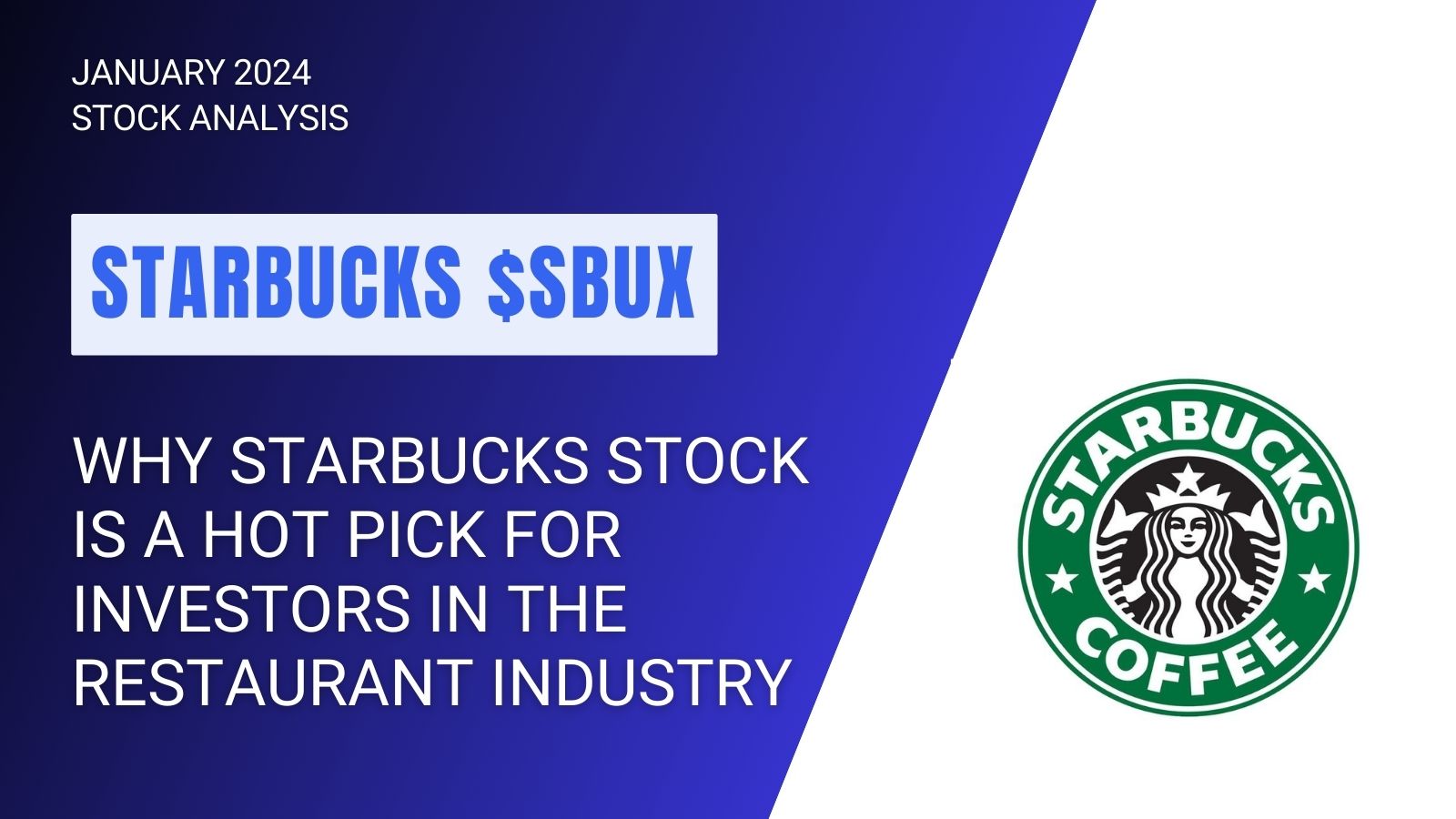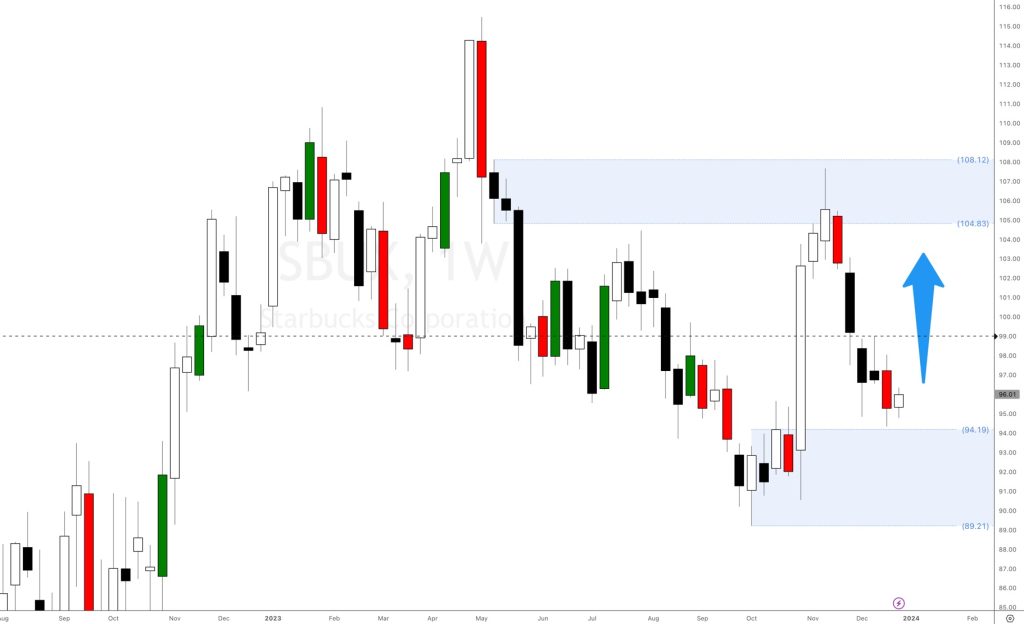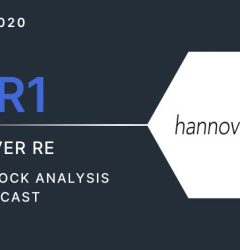02 Jan

Attention all caffeine lovers and stock market enthusiasts! If you’re searching for a steaming hot investment opportunity in the restaurant industry, look no further than the iconic green mermaid – Starbucks! With its irresistible aroma filling the streets of every major city, this global coffee powerhouse has captured not only our taste buds but also the attention of savvy investors worldwide. In this blog post, we dive deep into why Starbucks Stock is brewing up success and why it should be on your radar if you want to stir things up in your investment portfolio. So grab your favourite cup of joe and join us on this exciting journey through the world of Starbucks and its undeniable allure to investors everywhere.
Introduction to Starbucks and its history
Starbucks is a global coffee company and chain of coffeehouses that has become one of the most recognized brands in the world. The company was founded in 1971 by three friends, Jerry Baldwin, Zev Siegl, and Gordon Bowker, who were passionate about high-quality coffee. The first Starbucks store opened in Seattle’s Pike Place Market, where they sold roasted whole-bean coffees.
In 1982, Howard Schultz joined the company as Director of Marketing and Retail Operations. During a trip to Milan, he was inspired by the Italian coffee culture and convinced the founders to open a separate department for selling beverages made from their beans. However, when they refused to pursue this idea further, Schultz left Starbucks in 1985 and started his own speciality coffee chain called Il Giornale.
It wasn’t until 1987 that Schultz acquired Starbucks with the help of investors and merged it with his own Il Giornale stores. This marked the beginning of Starbucks as we know it today – a place where people can come together over premium cups of coffee.
The Early Growth Years
In 1992, Starbucks went public with its initial public offering (IPO) at $17 per share. By this time, more than 165 locations were already across Pacific Northwest states such as Washington, Oregon, and British Columbia. In just two years after the IPO, there were over 425 outlets nationwide.
Starbucks’ international expansion began in 1996 with the opening of its first store outside North America in Tokyo, Japan. By 2000, Starbucks had over 3,500 stores worldwide. The company continued to grow, opening stores in Europe, Asia, and South America. In 2008, Starbucks announced its biggest expansion plan yet – to open 40,000 stores around the world by 2020. This ambitious goal was later scaled back due to economic downturns and market saturation concerns. However, the company continued to expand globally and today has over 31,000 locations in more than 80 countries.
Starbucks stock analysis and investment opportunity
Starbucks, the renowned coffeehouse chain, has become a household name for many people across the globe. With over 30,000 stores in more than 80 countries, Starbucks has established itself as one of the leading players in the restaurant industry. Its strong financial performance and impressive growth potential have made it a hot pick for investors looking to invest in this sector. In this section, I will analyse Starbucks’ weekly timeframe by wearing the supply and demand imbalances glasses. As supply and demand traders, we do not need to understand the company’s forecasts and financial performance to analyze its growth potential. We only need to know where the imbalances in price are on a price chart.
Watch Starbucks’s stock video analysis below to understand what we are expecting. The stock is currently trading at $96 per share. It’s very close to a strong demand imbalance sitting at $94.19. We expect the stock to rally to $104 and much higher.

Overview of the current state of the restaurant industry
The restaurant industry is a vast and dynamic sector that plays an essential role in the global economy. With an estimated worth of over $899 billion in 2019, it consists of various types of establishments ranging from fast-food chains to upscale fine-dining restaurants. The industry has been growing steadily over the years, with new trends and innovations constantly emerging.
However, the current state of the restaurant industry has been significantly impacted by the ongoing COVID-19 pandemic. As governments around the world implemented lockdowns and social distancing measures, many restaurants were forced to close their doors temporarily or even permanently. This has resulted in a sharp decline in revenue for businesses and significant job losses for employees. Despite these challenges, there are still reasons to be optimistic about the future of the restaurant industry. As vaccine rollouts continue and restrictions ease, there is hope for a gradual recovery in consumer spending and dining-out habits. The National Restaurant Association predicts that sales will reach $1.2 trillion by 2023, showing signs of growth potential.
One major trend that has emerged during this pandemic is the shift towards off-premise dining options such as delivery, takeout, and curbside pickup. Many restaurants have adapted to this change by investing in technology and expanding their online ordering capabilities. This trend is expected to continue even after the pandemic ends as consumers have become accustomed to this convenience.
Another aspect that has affected the restaurant industry is changing consumer preferences and behaviour. Health-conscious consumers are seeking out healthier menu options while also supporting sustainability.
Investing in any stock, including Starbucks, comes with its own set of risks and challenges that investors need to be aware of. While Starbucks may seem like a promising investment opportunity, it is important to thoroughly evaluate the potential risks and challenges associated with investing in this stock before making any decisions. Expert opinions and recommendations are not crucial when it comes to making investment decisions; we only need supply and demand imbalances. When considering investing in Beneteau stock, it is not important to look at what industry experts say about the company’s performance and potential for growth.
Join Set and Forget’s online trading academy or subscribe to our Trade Ideas to start making money using the forces of supply and demand.








